Take a heapdump and find out what objects are holding them. Once you know what objects are holding the arrays you should have an easy time idea figuring out what is allocating them.
It doesn't answer your question, but my question is:
Why do you care?
You've told the jvm garbage collector (GC) it can use up to 1GB of memory. Java is using less than 250M.
The GC tries to be smart about when it garbage collects and also how hard it works at garbage collection. In your graph, there is no demand for memory. The jvm isn't anywhere near that 1GB limit you set. I see no reason the GC should try very hard at all. Not sure why you would care either.
Its a good thing for the garbage collector to be lazy. The less the GC works, the more resources there are available for your application.
Have you tried triggering GC via the JVisualVM "Perform GC" button? That button should trigger a "stop the world" garbage collection operation. Try it when the graph is in the middle of one of those saw tooth ramp ups - I predict that the usage will drop to the base of the saw tooth or below. If it does, that proves that the memory saw tooth is just garbage accumulation and GC is doing the right thing.
Here is an screenshot of memory usage for a java swing application I use:

Notice the sawtooth pattern.
You said you are worried about int[]. When I start the memory profiler and have it profile everything I can see the allocations of int[]

Basically all allocations come from an ObjectOutputStream$HandleTable.growEntries method. It looks like the thread the allocations were made on was spun up to handle a network message.
I suspect its caused by jmx itself. Possibly by rmi (do you use rmi?). Or the debugger (do you have a debugger connected?).


